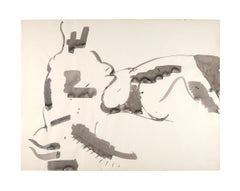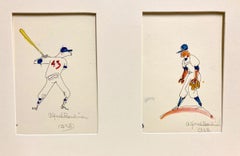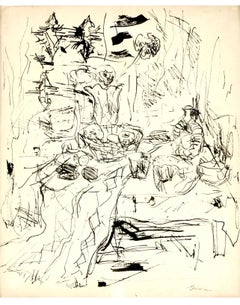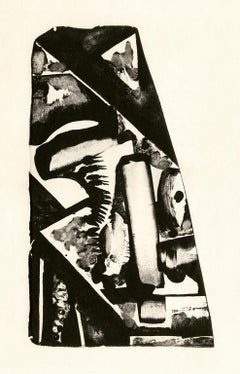Robert Blackburn
Robert Blackburn participated in the rich mix of art programs and creative groups available in Harlem as he was growing up, including Charles Alston's Harlem Arts Workshop, the Harlem YMCA, and later the Harlem Artists’ Guild. In 1937, Blackburn joined the WPA at the Harlem Community Art Center, the largest New York center for instruction in the arts. There, he was exposed to Harlem's most prominent artists, among them Aaron Douglas, William Henry Johnson, and Jacob Lawrence. Blackburn studied with Will Barnet and Vaclav Vytlacil at the Art Students League, which he attended in the early 1940s on scholarship. In 1949, he founded the Printmaking Workshop, an artist's cooperative modeled on Stanley William Hayter's Atelier 17. Blackburn's ongoing commitment to the workshop and his innovative approach to the art of lithography was critical in shaping the development of the medium. In his capacity as a master printmaker, Blackburn collaborated with many major American artists, including Romare Bearden, Robert Motherwell, Jasper Johns, and Helen Frankenthaler. From an early age, Blackburn was the recipient of many awards and fellowships, including the Frederick Douglass Guidance and Art Medals, John Wanamaker Memorial Medal, Spingarn Award, Robert Pious Award, Poussant Award, G. T. Pinckney Award, and the John Hay Whitney Traveling Fellowship. Blackburn's work is represented in numerous major American art museums and collections, including the Smithsonian American Art Museum, the Metropolitan Museum of Art, the Brooklyn Museum, the Museum of Modern Art, the Philadelphia Museum of Art, and the Library of Congress.
1940s American Modern Robert Blackburn
Ink
Mid-20th Century American Modern Robert Blackburn
India Ink, Watercolor
Mid-20th Century American Modern Robert Blackburn
India Ink, Paper
20th Century American Modern Robert Blackburn
Archival Paper, India Ink
1950s American Modern Robert Blackburn
Ink, Gouache, Graphite
20th Century American Modern Robert Blackburn
Archival Ink, Archival Paper
20th Century American Modern Robert Blackburn
Paper, Ink
1950s American Modern Robert Blackburn
Ink, Gouache, Graphite
20th Century American Modern Robert Blackburn
Paper, India Ink
1930s American Modern Robert Blackburn
India Ink, Watercolor, Illustration Board
1950s American Modern Robert Blackburn
Ink, Graphite, Paper
1950s American Modern Robert Blackburn
Ink
Mid-20th Century American Modern Robert Blackburn
Ink
1950s Abstract Expressionist Robert Blackburn
Lithograph
1950s Abstract Expressionist Robert Blackburn
Lithograph




